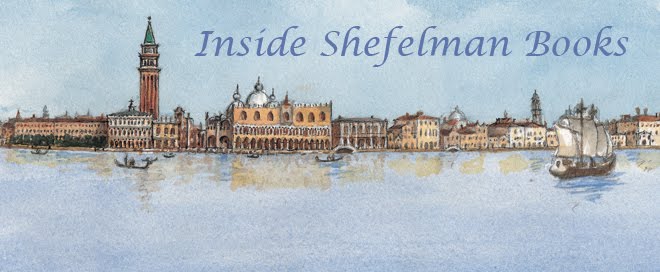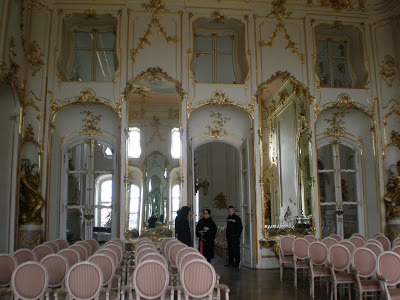Sunday, January 24, 2010
Research Adventure
JANICE: Research takes you to places you would never go and connects you to people you would never know otherwise. It is a glorious adventure with a purpose.
Tom and I are currently working on a picture book biography titled I, Papa Haydn. Since we do not write about or illustrate a place we have not seen with our own eyes, we traveled to Austria and Hungary where the composer Franz Joseph Haydn lived.
On a cold, rainy, windy day in November we set out from Vienna by train to visit the country palace of Prince Esterhazy, Haydn's patron. We crossed the border into Hungary and stopped in the small village of Fertod. Alighting from the train, we seemed to be nowhere. There was no train station, only a hut by the tracks. Tom knocked on the door. A grim, bearded, man opened it a crack.
"Kastely?" I asked. (Castle or palace in Hungarian)
Out came an arm and pointed the direction. Though the palace was nowhere in sight, we started off down the long straight street bordered by shut-tight houses. No one was about, only dogs that barked at us.
At last we came to a center and a school and asked directions. Walking on to the edge of town we came upon the lonely palace, a Hungarian Versailles, walked through the wrought iron gate, across the vast entrance court, and up the central steps. The doors were locked. On a lower level we found a room with a ticket office and a sign that obviously said closed. The few tourists who had gathered there left. We stayed. I noticed a door slightly ajar. We opened it and began roaming the palace, not knowing how to find the room we had to see, the Music Salon. Doors were locked and Tom's new shoes were hurting, so I went on. A guard commanded me to leave.
"Mein Herr," (My husband) I pleaded in German and pointed upstairs. He threw up his arms, and I continued to explore. Finally a young man came bounding down a spiral staircase. I pulled out Tom's storyboard illustrations and pointed to the one of the Music Salon. He understood and brought the curator of the palace. She, along with the guard, took us to the glorious French salon.
After Tom took photographs, we hurried back to catch the last train to Vienna. Standing in the cold wind as daylight waned, we watched the man in the hut come out and manually lower the traffic gate for the approaching train. As we boarded, he smiled and waved. It was the only smile we received from the village. But we got what we wanted. The moral to this story is, never take no for an answer.
Wednesday, January 6, 2010
Little Yellow Tabs
Our home studios are in two separate buildings, the big house and the little house, connected by a bridge across our wooded property. On days when I'm working downtown in my architectural office, Janice crosses the bridge, reviews the current sketch or illustration, and leaves her comments on little yellow tabs stuck around the edges — some praising, some not.
In an illustration of young Antonio Vivaldi playing his violin at home, I gave him a sad expression. His mother had just told him that God meant for him to be a priest, not a violinist, which was not what Antonio wanted to hear. As he tells it, "I stomped upstairs and played a fast piece that expressed the anger in my heart."
When I came home from the office the illustration had a yellow tab that said, "Angry not sad. Read the text, dummy! Love, Janice."
I did and the final illustration became one of our favorites in I, Vivaldi. Eerdmans Books for Young Readers also loved it and turned it into a poster for the book.
Subscribe to:
Posts (Atom)






